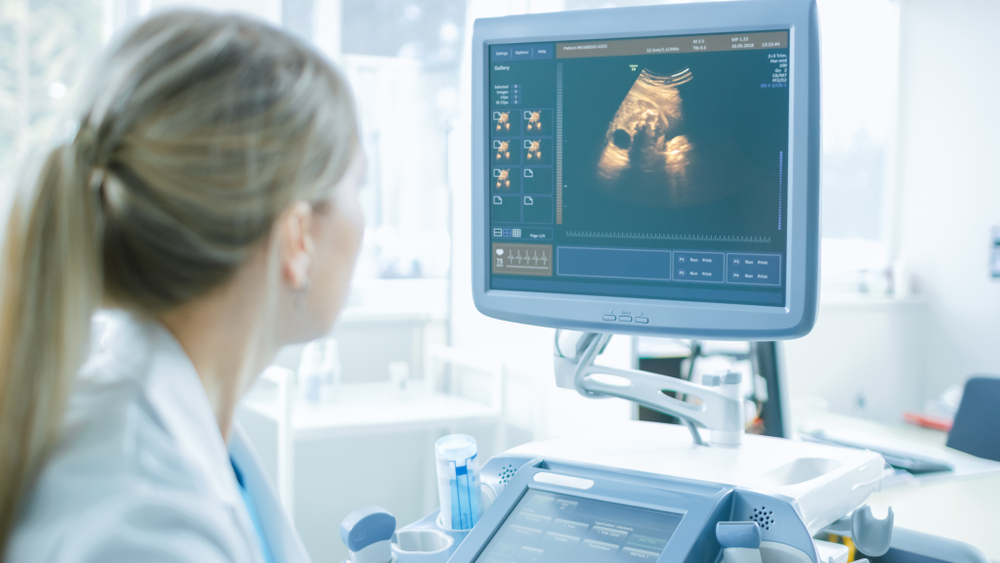Volumetric Ultrasound for Expedient Diagnosis
In healthcare, an expedient diagnosis is fundamental to successful treatment. The faster the diagnosis, the quicker a patient’s clinical team can determine the right treatment approach. But a fast and accurate diagnosis requires tangible data, which explains why ultrasound imaging is the standard for in-depth diagnostics.
 Volumetric ultrasound contributes to rapid diagnoses across a wide range of medical specialties. With a clear, three-dimensional picture of a patient’s condition, physicians are empowered to provide a higher standard of patient care.
Volumetric ultrasound contributes to rapid diagnoses across a wide range of medical specialties. With a clear, three-dimensional picture of a patient’s condition, physicians are empowered to provide a higher standard of patient care.
What is volumetric ultrasound?
Volumetric ultrasound technology has been around for more than twenty years. In that time, imaging clarity and capacity have exponentially advanced. While it still relies on pulse-echo phased array principles to steer either the beam of a two-dimensional matrix array transducer or a digital stepper motor, today’s volumetric ultrasound uses powerful graphics processing capability to render and deliver detailed, 3D images.
These advancements allow clinicians to manipulate ultrasound scans during the exam. Instead of stitching together scans from various angles to make an informed assessment, technology performs this action in real time using high-fidelity scans. This multifaceted scan data provides a quicker path to diagnosis.
Volumetric ultrasound is increasingly used in place of more expensive imaging options, including MRI or CT scans. The latter represent static technologies with stringent preparation requirements, but 3D ultrasound is portable and quickly administered — a crucial advantage in triage or emergency situations.
A clearer diagnostic picture
The imaging depth provided by 3D volumetric ultrasound allows for more comprehensive diagnoses of patient conditions. Clinicians can view a scan from different angles and use volumetric data to understand image morphology.
 Consider, for example, 3D volumetric scans of a fetus. Different volume renderings distinguish between tissue and fluids, which allows an OB/GYN to monitor the physiological development of a fetus as well as the emergence of its complex nervous and circulatory systems. Clinicians obtain a clear picture of each fetal system’s development and its effects on the overall health of the fetus throughout gestation.
Consider, for example, 3D volumetric scans of a fetus. Different volume renderings distinguish between tissue and fluids, which allows an OB/GYN to monitor the physiological development of a fetus as well as the emergence of its complex nervous and circulatory systems. Clinicians obtain a clear picture of each fetal system’s development and its effects on the overall health of the fetus throughout gestation.
Outside of obstetrics, volumetric ultrasound is in use as a primary diagnostic tool across the entire medical spectrum. From cardiology to oncology and nephrology to gastroenterology, volumetric ultrasound gives clinicians a comprehensive view of the diagnostic area to understand patient conditions with expedience, precision, and confidence.
More benefits of volumetric imaging
Ultrasound technology’s ability to produce real-time 3D volumetric models offers extensive benefits beyond expedient diagnosis. With ultrasound regularly deployed as a primary diagnostic tool, clinicians and patients benefit from:
- A more accurate understanding of medical conditions and extenuating factors
- Improved doctor-patient rapport in the early stages of clinical diagnosis
- Enhanced visibility regarding patient conditions via multifaceted imaging
- Condition monitoring to observe treatment progress over time via changes in 3D scans
- Informed planning prior to more invasive procedures, such as a scope or biopsy
Above all, volumetric ultrasound creates a comprehensive diagnostic visual as a foundation for clinical understanding. Three-dimensional imaging provides essential, immediate context for physicians to determine the best course of treatment and for patients to understand their diagnosis.
Volumetric ultrasound at the forefront of diagnosis
Volumetric ultrasound is powering comprehensive medical imaging across a range of modalities. Already a diagnostic standard, emerging ultrasound technology is optimizing 3D volumetric data and pushing diagnostic capability even further. Few medical insights are more powerful than those offered by 3D imaging, and clinicians are using volumetric ultrasound data to expedite diagnoses and deliver a higher standard of patient care.
